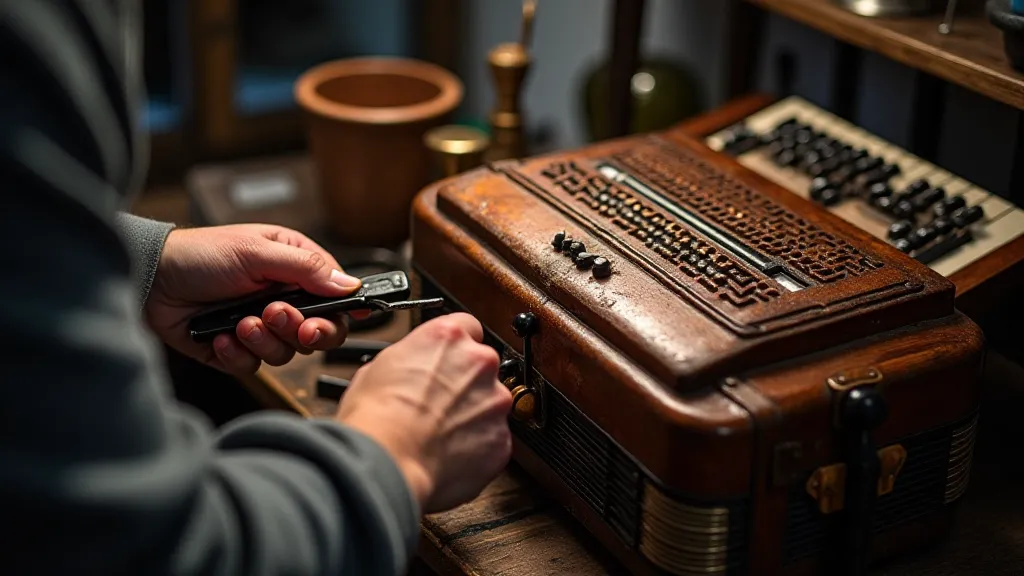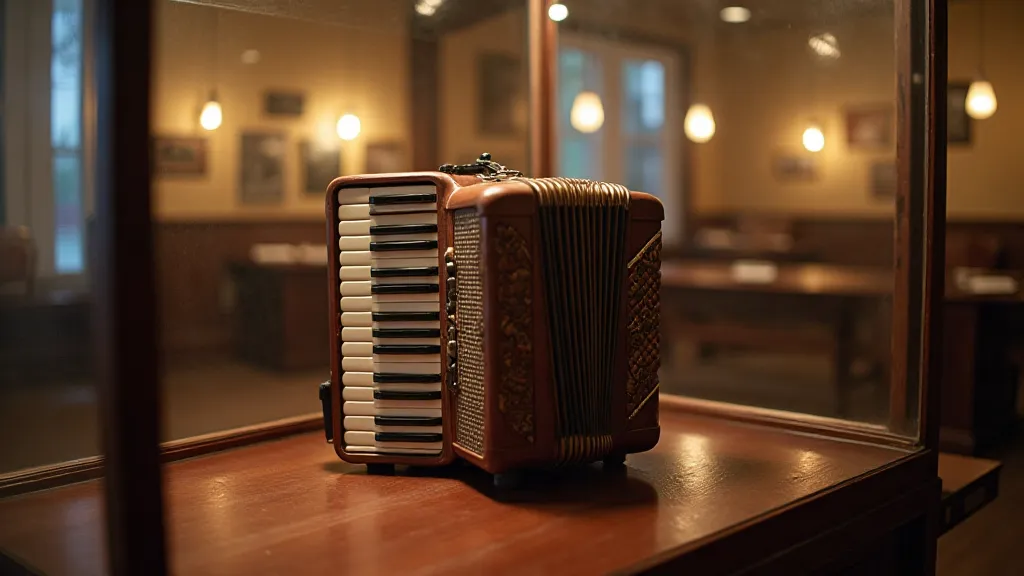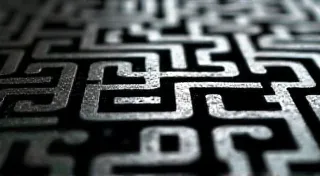Synesthetic Circuits: Mapping Data to Sensory Output Beyond Visual Displays
There's something profoundly satisfying about understanding how things work. It’s a primal urge, a connection to the ingenuity of those who came before. I remember my grandfather, a quiet man with calloused hands, meticulously restoring antique accordions. He wasn’t a musician himself, but the process of bringing these beautiful, complex machines back to life resonated with him. Each reed, each bellows, each carefully inlaid detail spoke of craftsmanship and a dedication to artistry that transcended mere utility. It wasn't just about repairing; it was about preserving a feeling, a history – a symphony waiting to be reborn. That same appreciation for layered complexity and hidden beauty is what draws me to synesthetic circuits.
Now, when we think of electronics projects, screens often dominate our minds. LEDs blinking, data graphs scrolling – it's all visually oriented. But what if we could bypass the visual entirely, and translate data into something else? Something tangible, auditory, even haptic? That's the essence of synesthetic circuits – mapping data to sensory outputs beyond the visual display. Think of it as giving data a voice, a touch, a texture.

The Roots of Synesthesia and the Modern Circuit
The term "synesthesia" itself originates from the neurological phenomenon where stimulation of one sense involuntarily triggers experiences in another. Someone with synesthesia might "see" colors when they hear music, or "taste" shapes. While we're not recreating that neurological complexity, we're emulating the concept – creating a mapping between data streams and sensory experiences.
Historically, mechanical devices often accomplished this kind of sensory translation. Think of a barometer connected to a series of chimes, signaling changes in atmospheric pressure with melodic tones. Or a windsock triggering a series of flags, visually conveying wind speed and direction. These weren't "synesthetic circuits" in the digital sense, but they embodied the same principle: converting abstract information into perceptible sensations.
With the advent of microcontrollers like Arduino and Raspberry Pi, however, this principle has become incredibly accessible. These small, inexpensive computers can be programmed to read data from sensors (temperature, light, pressure, distance, etc.) and use that data to control actuators – motors, speakers, haptic devices – to create novel sensory experiences. Building enclosures for these circuits can be challenging, and some makers turn to methods like 3D printing custom enclosures to achieve desired form and function.
Arduino and Raspberry Pi: Your Sensory Palette
Arduino, with its ease of use and extensive community support, is a great starting point. Imagine a simple project where a light sensor's reading dictates the pitch of a speaker. As the light grows brighter, the tone rises. Or a temperature sensor controlling the intensity of a small vibration motor, mimicking the feeling of warmth or cold.
Raspberry Pi, with its more powerful processor and networking capabilities, allows for even more ambitious projects. You could build a "data sonification" system that translates stock market fluctuations into a complex soundscape. Or a haptic feedback system that simulates the texture of different materials based on data from a surface scanner. Ensuring the integrity of your project's electrical performance can also be critical; sometimes, optimizing circuit performance is a necessary step in advanced applications.
The key is to think beyond the obvious. Instead of displaying a graph of humidity, *feel* the humidity with a subtle vibration that intensifies as the air becomes more saturated. Instead of seeing a map of traffic density, *hear* the flow of traffic through a system of layered tones, where congested areas are represented by dissonant chords.
Project Ideas: Beyond the Blink and Buzz
Let's explore some concrete project ideas, ranging in complexity:
- The "Mood Light": A temperature and humidity sensor feeds data to an Arduino, which controls the color and intensity of an LED strip. A "comfortable" temperature might be a warm orange, while a stuffy room is represented by a cool blue.
- The "Wind Chime Simulator": An anemometer (wind speed sensor) triggers a series of tones played by a sound module. The faster the wind, the more complex and chaotic the chime sequence.
- The "Data-Driven Tactile Sculpture": A distance sensor scans a surface, and the data is used to control a series of small vibrating actuators embedded in a sculpted form. The texture of the sculpture changes dynamically based on the scanned environment.
- The “Biofeedback Sonification”: Utilizing heart rate sensor data, the Arduino modulates the frequency and complexity of an audio output. A calm state produces peaceful, flowing tones, while stress is represented by jarring or chaotic sounds.

Preserving Legacy Through Emulation
Beyond simply transforming data into sensory experiences, synesthetic circuits open doors to preserving older systems and hardware. Consider situations where vintage equipment is failing or documentation is scarce. Employing a Raspberry Pi to emulating legacy hardware can effectively revive these systems and provide access to functionality lost to time. This approach aligns with the spirit of restoration – breathing new life into something old.
Chromatic Data Landscapes
While audio and haptic feedback are powerful, visualizing data through color offers another rich sensory dimension. This can be particularly effective when conveying complex information in an intuitive and engaging way. Imagine translating wind speed into the hue of a dynamically changing LED display, or representing stock market trends through a cascading spectrum of colors. Building data-driven color changing displays introduces an aesthetic element that enhances the overall sensory experience.
Considerations and Challenges
While the concept is relatively straightforward, there are challenges to consider. Mapping abstract data to sensory outputs isn’t always intuitive. You need to carefully choose mappings that are meaningful and avoid overwhelming the user. A jarring, discordant audio output might be interesting for a brief moment, but it quickly becomes unpleasant.
Furthermore, the quality of the sensory output is crucial. Cheap speakers or poorly designed haptic devices can ruin the experience. Investing in decent components is worthwhile.
Another important consideration is the ethical implications. Are you creating a sensory overload? Are you manipulating the user's perception of reality? These are questions worth pondering, especially when dealing with sensitive data or potentially stressful situations.
The Restoration Connection: A Deeper Appreciation
My grandfather’s accordion restoration taught me more than just how to replace a reed or repair a bellows. It taught me to appreciate the artistry and ingenuity of the past. It underscored the importance of preserving not just objects, but the feelings and experiences they evoke.
Synesthetic circuits, in a similar way, allow us to translate the intangible into something tangible, something we can *feel*. They invite us to look beyond the screen, to engage our senses in new and unexpected ways. They offer a fresh perspective on data, transforming it from abstract numbers into a symphony of sensory experiences.
Just as restoring an antique accordion breathes new life into a forgotten masterpiece, creating synesthetic circuits allows us to transform data into a richer, more emotionally resonant experience. It’s a journey of creativity, exploration, and a deeper appreciation for the power of connection – connection to data, to technology, and to our senses.






